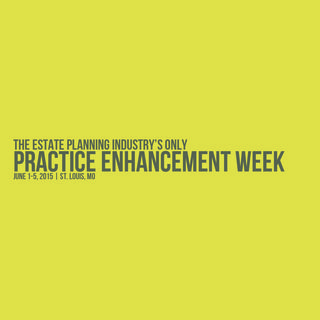In our previous post Getting Smart With Your Law Firm Marketing Budget – Part 1 we discussed how to cut your marketing budget, and also how not to. Now let’s think about some cost-effective marketing strategies that we all should be doing!
Some marketing techniques to consider:
 1) Step Up Your Social Media Activities If You Haven’t Already
1) Step Up Your Social Media Activities If You Haven’t Already
If your customers are active on social media, then you should be too. When marketing dollars are low, bump up the time and resources you allocate to Facebook, Twitter, and LinkedIn. Claim your business listing on sites like Google Places, Yelp and Yahoo Local. Make sure you monitor those sites and respond to any review. Start a blog, or reinvigorate your existing one. This costs you only your time. I know time is important, but it is a resource, and if you aren’t spending money on marketing, you’ve got to be spending time.
2) Use the Power of Referrals and Don’t Be Afraid To ASK!
Referrals are free and a great tool for spreading the word about your business. Make certain you are asking your clients for them at your synergy meetings and strategy meetings. Run a promotion for “friends of our family” – start a marketing campaign to get existing clients you like and enjoy working with to refer to you. Reach out to them and tell them that, because you like them, you are willing to give “X” to anyone they refer, either a family member or a friend who contacts you within 48 hours, and then decide what that offering is. Maybe it’s a complementary year on your maintenance plan or DocuBank. Be creative and show value to get that phone to ring.
I say to offer this to clients you enjoy because people hang with people like them. Just make sure you have a clear offering and a timeline attached to it. That will get action.
3) Sometimes You Need To Refine Your Marketing Before You Cut – Sometimes Simple Is Better
I often see logos with fancy taglines that say something like “helping families pass on their legacy.” What do you think that means to people exposed to your brand or logo? What if they had no clue what you do and just saw your firm name (say for example it’s Law Offices of Joe Smith) with that tagline? Do you think they would know exactly what you do, and all that you do? Instead, say something like “helping your family with their estate planning goals” or just “the estate planning professional for your family.” Sometimes too fancy doesn’t connect or resonate.
So ask yourself, how can you refine your tagline – or any other strategy you have – to strengthen your marketing message and grow revenue?
4) Get Out in Your Community
Another low-cost but high-profile approach that works well for small businesses is getting involved with community events and programs. We have a listing on our members site of national events by month. Look at it, and find some events where you can reach out to your community and support them. A business that is active in the community often wins the hearts and minds of consumers. Plus, it’s often easier on your pocketbook than other marketing programs.
5) Be Strategic About What You Cut
If any tactics aren’t working for you, don’t be afraid or hesitant to cut them. I know we push hard for a six-month commitment before you cut so you can verify that it’s not working. I had a member tell me his ad wasn’t doing anything. He only got a “few calls” for his workshop from it, so he was pulling the ad. However, he also wasn’t doing any reporting, so those two calls were probably more like four. I encouraged him not to cut it, because if you get two calls and you aren’t tracking, then you can probably truly allocate more than that number off the top of your head. He cut the ad at four months, and in month five, he had people calling for his workshop from his ad. Pulling that ad hurt him, and he lost traction.
I also had a member who, at the fourth month of his newspaper ad, had not one call. Zero calls, and he WAS tracking. We had to stop the bleeding and decided that the demographic may not be ideal where he was. We put that money toward marketing online and got some leads. And we started focusing more on RMS and filling his pipeline.
So you have got to evaluate often, and if you are seeing any movement whatsoever, stick with the program AND REVIEW YOUR REPORTING before making your final decision.
If you want to know more about what Lawyers With Purpose has to offer, please join us Monday at 8 EST for our free Having The Time To Have It All webinar.
In this one hour webinar, you will learn how all entrepreneurs have the same amount of time in the day and how they use it differently.
Here's just some of what you'll discover in this practice-transforming event…
- How to effectively utilize your time to enroll your team to help as many people as you choose and profit from it too
- To work effectively with your team
- How to balance your work life and your personal life to ensure you are able to create the maximum amount of value in both
- How to have sufficient time to market consistently which will ensure consistent cash flow and free up the time you're currently spending chasing dollars
It will give you the confidence and path to create a law practice that provides estate planning, elder law, asset protection, Medicaid, veterans benefits, special needs, and tax planning in a way that helps your clients and your community!
Most importantly, you will be able to ensure your clients are able to maintain their dignity as they age and protect the assets they have worked their whole life for.
If you're passionate about helping people, reserve your space for this one hour webinar essential to help you break through your time restrictions to help more people and create more value!
Just register here to reserve your seat… it's 100% FREE!
Roslyn Drotar – Internet Marketing Strategist, Lawyers With Purpose
 You should not be “babysitting” staff members so they stay on track.
You should not be “babysitting” staff members so they stay on track.









